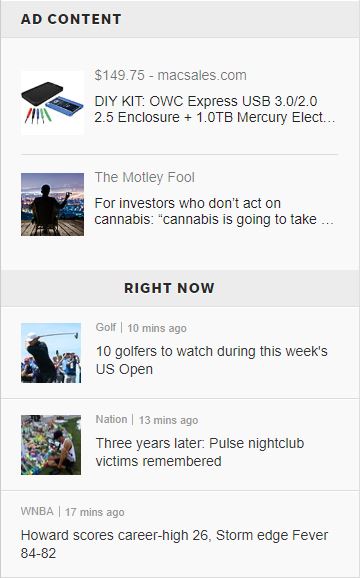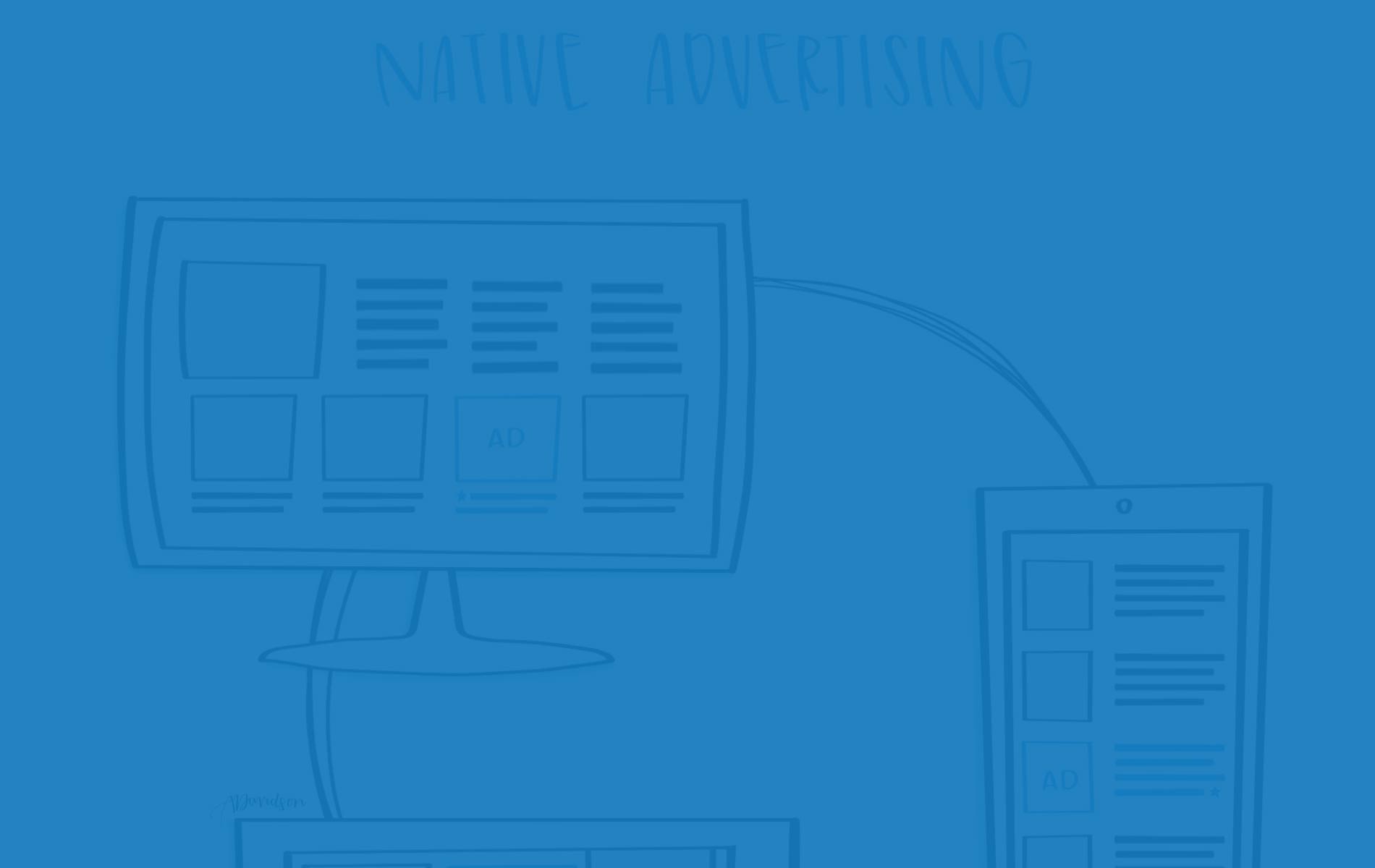Native advertising seemed to be a big topic in the past few years, but then seemed to drop off the radar in 2019. A Google Trends search shows that since peaking in late 2018, searches for the term have slowed considerably.
If it’s still new to you, here’s what it is:
Native advertising is basically any advertisement that matches the look and user experience of an application or website. Ads in a Facebook feed, paid search ads in Google, promoted Reddit posts, and paid content on publisher sites that look like regular stories are all examples of native advertising.

The rise of native advertising
Advertisements used to look very different online. They didn’t always fit into the flow of a website. They were big, bold, and in your face.
And that’s why people hated them.
Then came native advertising…
Marketers loved the idea of native advertising after click thru rates for display ads went into the toilet in the mid 2000’s – dropping to 0.35%. Users had banner blindness, which meant most ads not only weren’t clicked, but never even noticed.
Some of the first online native advertising was done by Google in their paid search ads. These ads were called out on the page next to the organic results and were part of the user experience when doing a search.
Outbrain and Taboola came along and sold ad space on major publisher sites that looked like regular articles within the publication. The click thru rates for these ads completely outperformed regular display ads because they looked just like regular content on the publisher’s site. What’s more, these companies charged per click instead of by views, so advertisers got what they paid for.
You’ve more than likely clicked on an ad in the Taboola or Outbrain networks. Here’s what they look like:

Is native advertising still a “thing”? Or is it just “advertising?”
As publishers, applications, and social media sites wanted to monetize more and more, they had to rely on people actually clicking ads. That meant making ads look as seamless as possible with their other content.
Anymore, if you buy ad space on a social network, Google search, or many other platforms, you’re buying ads that are going to blend into the content of the publication or application.
Google released a new format for paid search ads, and they look almost identical to organic search results, with the exception of the small word, “Ad” next to them. These ads used to have a different background color and were formatted in a way where they were easily distinguishable from organic results. Now they are blending together more and more.
“Native” advertising is becoming the new “advertising.” And this trend will continue moving forward.
What native advertising should you do?
What sites you advertise on, and how you advertise should be driven by your marketing objectives.
If your goal is to increase brand awareness and generally drive eyeballs to your site, cheaper pay per click solutions like Taboola, Outbrain, or Facebook ads might make the most sense. However, if you’re going for conversions, Google paid search is often the channel advertisers target to get prospects who are further down the marketing funnel and are looking to convert.
In general, cheap clicks seldom convert. More expensive clicks, may convert higher, but you need to test it for yourself to find out.
Native advertising is dead, long live native advertising
Native ads drive more clicks, and therefore more revenue, for publishers as well as advertisers. As a result, they are not only here to stay, but they are becoming the norm when it comes to online advertising.
Be prepared to see the lines blur even further between what’s real and what’s for sale on social media and publisher sites in the future.
That said, what do you think? Is native advertising still something that should be called out separately from regular advertising? How do you feel about ads blending with content?
About Sketchalytics
Each week we send out a micro-lesson in marketing and/or business.
Our goal is NOT to give you best practices to go out and do what other people do. You can get that anywhere.
Instead, our goal is to give you knowledge that you can apply to your own organization to make the best decisions possible.
If you know anyone who you think would benefit from Sketchalytics, please feel free to share this with them so they can sign up.


